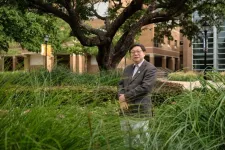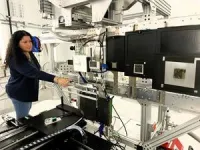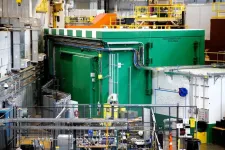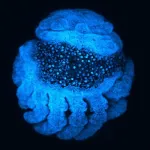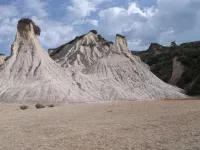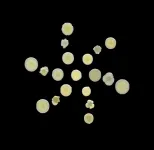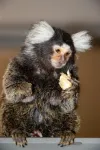(Press-News.org) Studies have shown that undergraduate students who participate in research activities under the guidance of a faculty mentor are more likely to finish college. That’s one of the many reasons universities like The University of Texas at Arlington are increasing their investment into undergraduate research.
Such research opportunities are not offered at many two-year colleges. To help bridge this gap, Jianzhong Su, professor of mathematics at UTA, is piloting a new program where students from the North Lake campus of Dallas College can come to UT Arlington to participate in a paid research opportunity with his department.
“This really is a program like none other,” said Dr. Su. “Every two weeks for one year, community college students come spend half a day with our distinguished faculty conducting hands-on research in the field of computational neuroscience.”
While at UTA, participating students learn how to conduct mathematics research from two faculty mentors. They also receive guidance from a faculty mentor at North Lake who helps ensure they feel supported and encouraged during their educational journey. Each student receives $6,000 for their time and effort conducting research.
The program at UTA is part of a larger initiative run by Los Angeles Pierce College, a two-year public community college with about 20,000 students. Pierce College received a $400,000 grant from the National Science Foundation (NSF) to embed community college students into research labs in mathematics departments at four-year research institutions.
Math was chosen as the focus because research opportunities in mathematics are rare for two-year college students, causing many individuals to miss out on much-needed and well-paid STEM careers, like those in quantum information science.
In addition to UTA, the other research facilities involved in this grant are the University of California at Los Angeles; George Mason University in Fairfax, Virginia; and Inter American University of Puerto Rico in San German. Students will be researching topics such as theoretical math concepts and the math related to the spread of contagious diseases.
Data show that many community college enrollees are non-traditional students who attend school while juggling full-time jobs and/or family responsibilities. This combined with the fact that most community colleges are more focused on classroom instruction than research is one of the main reasons students who start at two-year schools rarely get a chance to experience laboratory research as a potential career option. The ultimate goal of this paid research opportunity is to broaden STEM education for students.
“Last year was our first year of the two-year research program, and it really went great,” said Su. “One of the students has already made plans to transfer to UTA to complete a four-year degree. I’m not sure if the student will major in mathematics, but we’re thrilled to be able to help spark more Maverick researchers.”
Next up for the Su and his team will be applying for additional funding, as the initial two-year grant expires at the end of 2025. “We’re optimistic about our chances to receive additional funding for this pilot project,” said Su. “NSF has been very encouraging about regarding the early successes from our program.”
END
Community college students conduct research at UTA
Partnership encourages junior college students to continue to four-year STEM degrees
2024-08-29
ELSE PRESS RELEASES FROM THIS DATE:
VENUS rising: A new dawn for AI-powered atomic-scale 3D imaging
2024-08-29
The Department of Energy’s Oak Ridge National Laboratory added a new neutron scattering instrument to its powerhouse of discovery at the Spallation Neutron Source, charting new territory for neutron imaging through artificial intelligence. In July, DOE’s Office of Science approved the final commissioning of the Versatile Neutron Imaging Instrument, or VENUS.
“It’s a dream come true,” said ORNL neutron scattering scientist Hassina Bilheux. “It has been an honor and privilege to ...
Machine learning helps identify rheumatoid arthritis subtypes
2024-08-29
A machine-learning tool created by Weill Cornell Medicine and Hospital for Special Surgery (HSS) investigators can help distinguish subtypes of rheumatoid arthritis (RA), which may help scientists find ways to improve care for the complex condition.
The study published Aug. 29 in Nature Communications shows that artificial intelligence and machine learning technologies can effectively and efficiently subtype pathology samples from patients with RA.
“Our tool automates the analysis of pathology slides, which may one day lead to more precise and efficient disease diagnosis and personalized treatment for ...
Ancient gene gives spiders their narrow waist
2024-08-29
An ancient gene is crucial for the development of the distinctive waist that divides the spider body plan in two, according to a study publishing August 29th in the open-access journal PLOS Biology by Emily Setton from the University of Wisconsin-Madison, US, and colleagues.
The spider body is divided into two sections, separated by a narrow waist. Compared to insects and crustaceans, relatively little is known about embryonic development in spiders, and the genes involved in the formation of the spider waist are poorly understood.
To investigate, researchers sequenced genes expressed in embryos of the Texas brown tarantula (Aphonopelma hentzi) ...
How a salt giant radically reshaped Mediterranean marine biodiversity
2024-08-29
A new study paves the way to understanding biotic recovery after an ecological crisis in the Mediterranean Sea about 5.5 million years ago. An international team led by Konstantina Agiadi from the University of Vienna has now been able to quantify how marine biota was impacted by the salinization of the Mediterranean: Only 11 percent of the endemic species survived the crisis, and the biodiversity did not recover for at least another 1.7 million years. The study was just published in the renowned journal Science.
Lithospheric movements throughout Earth history have repeatedly led to the isolation of regional seas from the ...
Bacteria able to overcome cost of vancomycin resistance in lab setting
2024-08-29
Staphylococcus aureus has the potential to develop durable vancomycin resistance, according to a study published August 28, 2024, in the open-access journal PLOS Pathogens by Samuel Blechman and Erik Wright from the University of Pittsburgh, USA.
Despite decades of widespread treatment with the antibiotic vancomycin, vancomycin resistance among the bacterium S. aureus is extremely uncommon—only 16 such cases have reported in the U.S. to date. Vancomycin resistance mutations enable bacteria to grow in the presence of vancomycin, but they do so at a cost. Vancomycin-resistant S. aureus (VRSA) strains grow more slowly and will often lose their resistance mutations if vancomycin ...
Wearable “smart mask” monitors disease by capturing and analyzing exhaled breaths
2024-08-29
A person’s exhaled breath – which provides information that could unveil diverse health insights – has been hard to analyze. Now, a novel “smart mask” provides real-time, non-invasive monitoring of what people exhale. The mask, dubbed EBCare, captures and analyzes exhaled breath condensate (EBC), and it offers a promising solution for continuous EBC analysis at an affordable cost. “The significance of EBCare lies in its role as a versatile, convenient, efficient, real-time research platform and solution in various medical domains, ...
Cultural traditions, not genetics or environment, inform nest architecture among white-browed sparrow weaver birds
2024-08-29
Challenging long-held beliefs that bird nest building is solely influenced by genetics or the environment, researchers report that the white-browed sparrow weavers of the Kalahari Desert, Africa, build nests with distinct architectural styles that reflect group-specific cultural traditions. “Behavioral traditions in birds have been well documented for song, migration, foraging, and tool use. Here, we add building behavior and show that architectural styles emerge from birds that build together,” write the ...
Oxidative damage riggers micronuclear collapse mechanisms in cancer, two studies report
2024-08-29
Reactive oxygen species (ROS) from mitochondria are key drivers of genetic chaos in cancer by causing the collapse of micronuclear envelopes, a process that fuels the chromosomal instability (CIN) often observed in aggressive tumor behavior. These are the findings of two new studies. The findings identify key proteins in this destructive process – p62 and CHMP7 – revealing potential prognostic markers and therapeutic targets for high-CIN tumors. Errors in chromosome segregation during cell division can lead to chromosomal instability, a key feature of cancer. These errors result in the formation of micronuclei, which are small structures ...
Messinian salinity crisis nearly reset Mediterranean biodiversity
2024-08-29
A meta-analysis of Mediterranean Sea marine species reveals the profound impact of the Messinian Salinity Crisis – a drastic environmental event that resulted in the almost complete evaporation of the Mediterranean Sea roughly 5.5 million years ago. According to the new study’s findings, the event nearly reset the region’s biodiversity. The findings offer novel insights linking tectonic and palaeoceanographic changes to marine biodiversity, highlighting the significant role of salt giants in shaping biogeographic patterns, including those that still influence ecosystems today. The Messinian Salinity Crisis (MSC), ...
Uncovering the secret communication of monkeys: They have names!
2024-08-29
New study from Hebrew University reveals that marmoset monkeys use specific calls, known as "phee-calls," to name each other, a behavior previously known to exist only in humans, dolphins, and elephants. This discovery highlights the complexity of social communication in marmosets and suggests that their ability to vocally label each other may provide valuable insights into the evolution of human language.
LINK to pictures https://drive.google.com/drive/folders/1VjzO-70hk27UVX_IuQ6FTsHgmCgk9PCH?usp=drive_link
Credit for pictures and sound: David Omer Lab
In a groundbreaking discovery, researchers from Hebrew ...
LAST 30 PRESS RELEASES:
Numbers in our sights affect how we perceive space
SIMJ announces global collaborative book project in commemoration of its 75th anniversary
Air pollution exposure and birth weight
Obstructive sleep apnea risk and mental health conditions among older adults
How talking slows eye movements behind the wheel
The Ceramic Society of Japan’s Oxoate Ceramics Research Association launches new international book project
Heart-brain connection: international study reveals the role of the vagus nerve in keeping the heart young
Researchers identify Rb1 as a predictive biomarker for a new therapeutic strategy in some breast cancers
Survey reveals ethical gaps slowing AI adoption in pediatric surgery
Stimulant ADHD medications work differently than thought
AI overestimates how smart people are, according to HSE economists
HSE researchers create genome-wide map of quadruplexes
Scientists boost cell "powerhouses" to burn more calories
Automatic label checking: The missing step in making reliable medical AI
Low daily alcohol intake linked to 50% heightened mouth cancer risk in India
American Meteorological Society announces Rick Spinrad as 2026 President-Elect
Biomass-based carbon capture spotlighted in newly released global climate webinar recording
Illuminating invisible nano pollutants: advanced bioimaging tracks the full journey of emerging nanoscale contaminants in living systems
How does age affect recovery from spinal cord injury?
Novel AI tool offers prognosis for patients with head and neck cancer
Fathers’ microplastic exposure tied to their children’s metabolic problems
Research validates laboratory model for studying high-grade serous ovarian cancer
SIR 2026 delivers transformative breakthroughs in minimally invasive medicine to improve patient care
Stem Cell Reports most downloaded papers of 2025 highlight the breadth and impact of stem cell research
Oxford-led study estimates NHS spends around 3% of its primary and secondary care budget on the health impacts of heat and cold in England
A researcher’s long quest leads to a smart composite breakthrough
Urban wild bees act as “microbial sensors” of city health.
New study finds where you live affects recovery after a hip fracture
Forecasting the impact of fully automated vehicle adoption on US road traffic injuries
Alcohol-related hospitalizations from 2016 to 2022
[Press-News.org] Community college students conduct research at UTAPartnership encourages junior college students to continue to four-year STEM degrees
